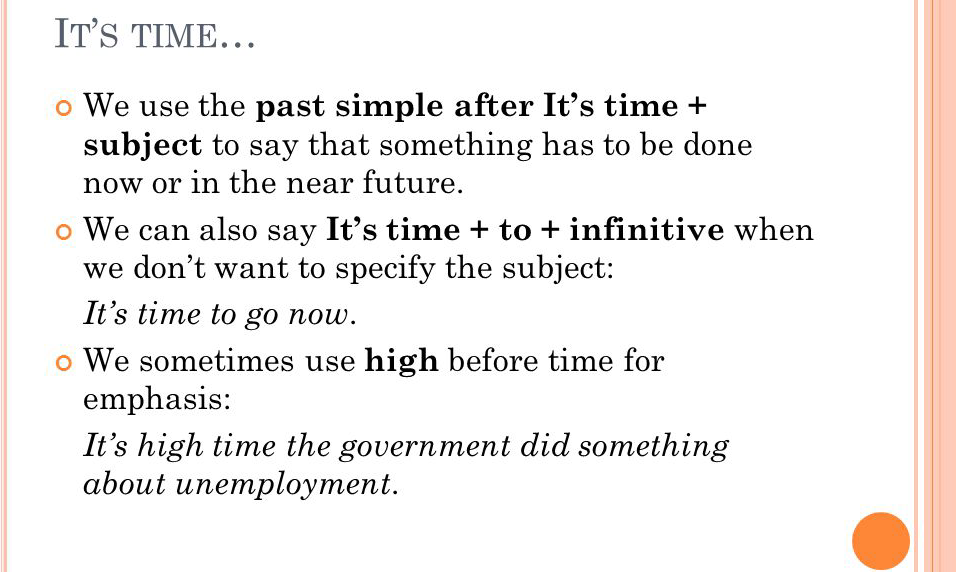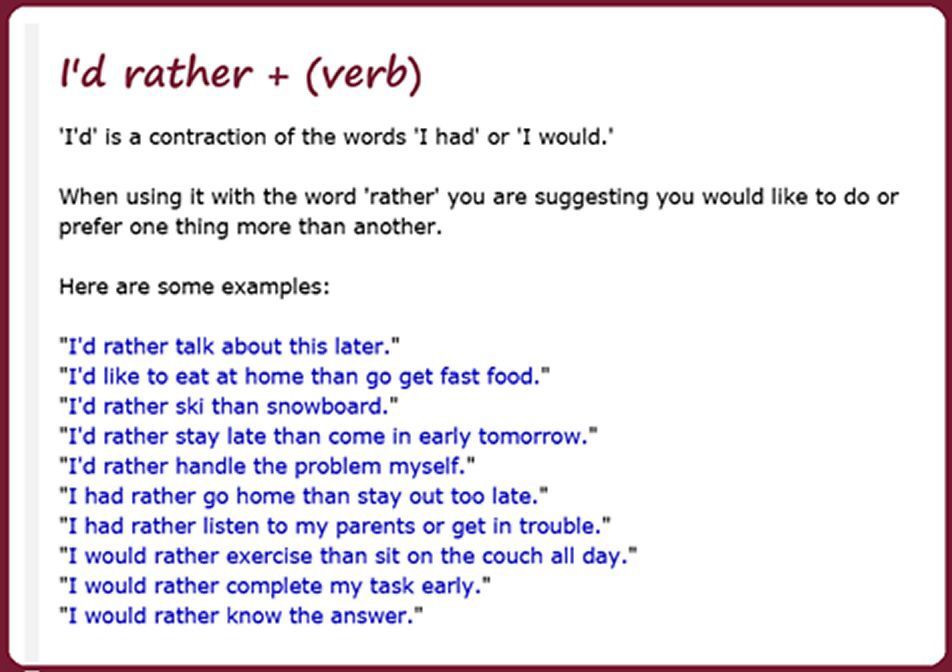Express opinions and feelings with It's time, It's high time, I'd rather

Expressing opinions and emotions is an important part of communicating and expressing yourself in English. There are three common structures that help us express our opinions or feelings strongly: "It's time," "It's high time," and "I'd rather."
1."It's time" - It's time.
This structure is used to express that a certain action should be done now, because the time is right to do it.
For example:
- It's time to start working on your project. (It's time to start working on your project.)
- It's time for us to leave the party. (It's time for us to leave the party.)

2."It's high time" - It's been a long time.
This structure also shows doing a certain action, but it means that the time is more appropriate because it is already late.
For example:
- It's high time you start taking your health seriously. (It's been a long time since you started taking your health seriously.)
- It's high time we upgraded our computer systems. (It's been a while since we should have upgraded our computer system.)

3."I'd rather" - I'd rather.
This structure is used to express preference or personal choice, when you prefer something over something else.

For example:
I'd rather stay home and read a book than go to the party. (I'd rather stay home and read books than go to parties.)
She'd rather have a quiet evening at home than go to a noisy bar. (She prefers a quiet evening at home to going to a noisy bar.)
Conclude:
The structures "It's time," "It's high time," and "I'd rather" are versatile and powerful ways to express opinions and feelings in English. You can use them in a variety of situations, from suggesting a particular course of action to expressing personal preferences. Practice using them in everyday conversation to enrich your vocabulary and make your expressions more confident and clear.

